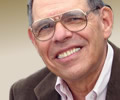The diagnosis of diabetes mellitus is officially based on measurement of fasting blood sugar or two hour post glucose blood sugar. Unofficially many physicians have used HbA1c to diagnose the disease. A few years ago I was on a panel discussing hypertension. A difficult case was presented. There was a question as to whether this patient was diabetic. I asked what his HbA1c was. One of the panel’s members said in an unkind tone that diabetes was not diagnosed by that test, that an elevated blood sugar was required. He was correct. My reply was that this was so because a bunch of guys had gotten together is a dark room and decreed this criterion, but that any thinking physician would suspect diabetes regardless of the blood sugar if the HbA1c were 8%.
Well, now another bunch of guys have decided that a HbA1c of 6.5% or more is the preferred way to diagnose diabetes. The panel presented its advice to the annual meeting of the American Diabetes Association in June. What’s changed? Nothing really. The panel just codified what many doctors have been doing for years.
Expert panels do things like this all the time. I’ve been on many of them and have watched with interest how a lot of very smart people can come up with advice that is not as smart as its membership. The reason for a panel being less than the sum of its parts is central to the human condition and applies to gatherings of any sort. There are always different ways to intelligently approach any problem. When a committee issues a report it will have to amalgamate the most conservative views with the most aggressive and include those in between. The result is often a dumbed down statement that offends no one (or if it gives offense is not enough to incite rebellion). The larger and more inclusive the membership of a panel or committee the blander its recommendations. This is what happens when a committee is truly knowledgeable and well meaning. Imagine the result when its membership is not fully up to speed or less than benign.
Of course reality eventually cannot be ignored and the truth, even if it’s been camouflaged, will sneak out. It’s been 30 years since any major change in the way we diagnose diabetes has been made. The panel’s findings have yet to be adopted by the ADA, though I suspect they will be endorsed. How long has HbA1c been used in diabetes ? – 40 years, though it was not proposed for use in monitoring glucose control in diabetics until 1976. Thus it may be that 30 years is as short a time as we can manage to catch up to some realities
The collective shaping of “reality” presents problems to busy physicians who lack both the time and expertise to evaluate the best regimens or diagnostic approaches to a vast array of diseases. Even if they can make a truly informed evaluation the malpractice implications of departing from guidelines (which morph into rules) often prevents them from independent action.
This problem, as suggested above, goes far beyond medicine. We don’t trust any individual to make an important decision totally on his own even if it’s its virtually sure to be right, yet committees have a hard time with focused reality. So we muddle through as best we can.


















“The reason for a panel being less than the sum of its parts is central to the human condition and applies to gatherings of any sort.”
SOOOOOOO TRUE!!! Maybe dumbing down to the lowest common denominator…..or the noisiest……or the most pugnacious………… who knows what went on to get the result?? And like you say, even true of intelligent people.
I’m especially suspicious of government panels where I think the result is pre ordained.
Operafilly